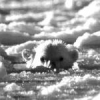Hey David. Don’t want to make a mountain out of a molehill, but this is a nontrivial issue. Call it a 3 on a scale of one to ten. Rather than try to summarize, I’m gonna post a few links. Those who are interested can read as much or little as they like and make their own decision.
FDA Food Code, § 3‑402.11 (2/3’s down page) (requiring freezing for most seafood served raw)
FDA Bad Bug Book, 2d ed. 2013, pdf at pp.149-151 (symptoms).
CDC Anisakiasis FAQs (same, less detail but easier to access).
Article by Audicana & Kennedy (2008) (link) (epidemiology).
Bear in mind “been doing this for years” is slim statistical support. For one thing, your sample size is limited. For another, there’s no reason to assume folks would correctly associate symptoms with the cause. Also, while never fatal and generally resolves in about three weeks without intervention, a growing problem is allergies, which are permanent and will be triggered by cooked nematodes as well as live ones. In effect, the person loses the ability to eat salmon and probably assumes it’s because of the fish.
FWIW, I’m not generally paranoid about food risks. This one I can’t get comfortable with.





